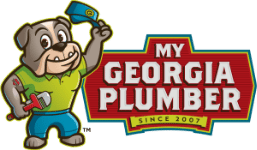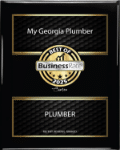
As autumn arrives with its crisp air and falling leaves, it’s the perfect time to show your plumbing system some seasonal care. Prepping your pipes for the cooler months can prevent costly repairs and keep your home running smoothly. Here’s a fall plumbing checklist to help you get your plumbing ready for the season.
1. Insulate Your Water Heater for Maximum Efficiency
Wrap your water heater in an insulating blanket to maintain its temperature and reduce energy consumption. This simple step can help your water heater retain heat and operate more efficiently, especially as temperatures drop. Consider giving your water heater a quick maintenance check to ensure it’s ready for the colder months.
2. Insulate Exposed Pipes to Prevent Freezing
As the temperature dips, exposed pipes are at risk of freezing and bursting. Insulate them with foam pipe insulation to protect against the cold. This is especially important for pipes in unheated areas like basements, crawl spaces, and garages.
3. Check for Leaks and Repair Them
Now is the time to do a thorough inspection of your plumbing system for leaks. Look for any signs of dripping faucets, wet spots around sinks, or unexplained water puddles. Repairing leaks promptly can help prevent more significant issues, such as water damage or increased utility bills.
4. Clean Out Gutters and Downspouts
Clogged gutters can lead to water pooling around your foundation, causing damage. Clear out any leaves, twigs, and debris from your gutters and downspouts to ensure proper drainage. This will help prevent leaks and water damage during fall rainstorms.
5. Disconnect Outdoor Hoses and Winterize Faucets
Disconnect garden hoses and store them indoors to prevent damage. Make sure outdoor faucets are turned off and drained to avoid freezing. You can also install outdoor faucet covers for added protection against cold weather.
6. Test Your Sump Pump to Avoid Basement Flooding
Your sump pump is crucial for preventing basement flooding during rainy months. Test it to ensure it’s functioning correctly by pouring water into the sump pit and observing if the pump activates. If it doesn’t, schedule a professional tune-up to avoid potential water damage, an essential part of our fall plumbing checklist!
7. Inspect Toilet and Faucet Seals
Check the seals around toilets and faucets to ensure they’re not leaking. Even small leaks can waste a significant amount of water over time. Tighten or replace any faulty seals to avoid further issues.
8. Clear Slow Drains
Slow drains can be a sign of a developing clog. Use a drain snake or a non-corrosive drain cleaner to remove any debris. Keeping your drains clear will help avoid blockages and keep your plumbing system flowing smoothly.
9. Monitor Water Pressure to Protect Your Pipes
High water pressure can strain your plumbing system and increase the risk of leaks or pipe bursts. Use a pressure gauge to check your home’s water pressure and adjust it if needed. The ideal range is between 40-60 psi.
10. Keep an Eye on Your Water Bill
A sudden increase in your water bill can indicate a hidden leak. Regularly review your bill to catch any unusual spikes. Addressing leaks promptly can save you from costly repairs down the road.
11. Maintain Your Septic System
If your home uses a septic system, fall is the perfect time to schedule a maintenance check. Regular pumping and inspection can prevent costly problems and keep your system running efficiently.
12. Upgrade to Water-Efficient Fixtures
Consider installing water-efficient faucets, showerheads, and toilets. These fixtures use less water without compromising performance, helping you save on utility bills and conserve water.
13. Turn Off the Main Water Supply if You’re Traveling
Planning a fall getaway? Turn off your home’s main water supply to prevent potential leaks or flooding while you’re away. This is a simple step to avoid water damage in your absence.
14. Schedule a Professional Plumbing Inspection
Don’t wait until an issue arises to call a plumber. Schedule a plumbing inspection with My Georgia Plumber to identify any potential problems before they turn into costly repairs. An expert inspection will give you peace of mind as the colder months approach.
15. Test Your Water Quality
As the seasons change, so can your water quality. If you notice any changes in taste, color, or smell, consider having your water tested and installing a water filtration system if necessary.
16. Keep Emergency Contact Information Handy
It’s always wise to have the contact information of a trusted plumbing professional on hand. If you experience any plumbing emergencies, call My Georgia Plumber at (770) 592-0081 for expert assistance.
Conclusion
Preparing your plumbing for fall can help prevent damage, conserve water, and keep your home safe. Follow this fall plumbing checklist to tackle seasonal maintenance tasks and avoid plumbing headaches. If you need a professional touch or suspect any issues, don’t hesitate to contact My Georgia Plumber at (770) 592-0081. We’re here to help you keep your plumbing in top shape all season long.











